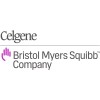
A Multi-center, Double-blinding, Parallel and Positive-controlled Phase III Clinical Trial for Efficacy...
Stress Ulcer BleedingThe purpose of this study is to evaluate the efficacy of the study drug (Ilaprazole Sodium for Injection) for potential effect on preventing stress ulcer bleeding in vulnerable population by comparing the radio of upper gastrointestinal bleeding when they are administered Ilaprazole Sodium for Injection and Esomeprazole Sodium for Injection respectively.

Bioactive Smart Dressings for Diabetic Foot Ulcers: Randomized Controlled Trial
Diabetic Foot UlcerWe propose a randomized controlled study to assess the efficacy of: Platelet-lysate loaded sustained release thermo-gelling formulation (Platelets-SR) EPO/ISDN/UFH cryogel dressing (Trigel) As adjuncts to standard-of-care (SOC) in the treatment of chronic DFUs compared to SOC alone for patients attending the DFU outpatient clinic at the Gastroenterology Centre, Mansoura University.

Phase 2a Study to Evaluate the Safety/Tolerability and Efficacy of TOP1288 200 mg Rectal Solution...
Ulcerative ColitisA Phase 2a, Randomised, Double-Blind, Placebo-Controlled Study to Evaluate the Safety/Tolerability and Efficacy of TOP1288 200 mg Rectal Solution Once Daily for 4 Weeks in Symptomatic Ulcerative Colitis Patients with Moderate to Severe Disease Activity

Study of E6007 in Japanese Patients With Moderate Active Ulcerative Colitis
Moderate Active Ulcerative ColitisThis is a randomized, double-blind, placebo-controlled, multi-center study to evaluate the efficacy and safety of E6007 once daily for 8 weeks in Japanese participants with moderate active ulcerative colitis. Participants will be stratified by prior therapeutic treatment and Mayo score at Baseline, and will be randomized 1:1:1 to receive E6007 30 milligrams (mg), E6007 60 mg or placebo.

This Study Tests How BI 655130 Works in Patients With Active Ulcerative Colitis. The Study Also...
ColitisUlcerativeThe primary objective of this trial is to understand the mechanism of action of BI655130 in patients with UC Secondary objectives are to explore clinical effect, safety and tolerability (including immunogenicity) of BI 655130 treatment

The Study of Wound Dressings for Portable NPWT
Pressure UlcerDiabetic Foot UlcerIntroduction Negative pressure wound therapy (NPWT), also known as topical negative pressure, has become a popular therapy for the treatment of many acute and chronic wounds. In many randomized controlled trials(RCTs), NPWT also has benefit in diabetic foot ulcer and pressure ulcer. However, most studies used commercial VAC device in combined with polyurethane (PU) foam. It is not yet clear where NPWT combined with gauze as wound filler is as effective as the PU foam. This RCT evaluated the efficacy of the gauze and PU foam, two kinds of fillers routinely used in negative pressure wound therapy, on the healing of the diabetic lower-extremity ulcers and the pressure ulcer. Methods From 2010/1 to 2015/01, the in-patient persons with difficult to heal diabetic ulcer or Grade 4 pressure ulcer were enrolled. These patients were divided into two groups randomly. The letter of consent was signed by the patient or patient's family. After debridement of the infective wound, the wound of experimental group was packed with a moistened Polyhexamethylene biguamide (PHMB) impregnated gauze (Kerlix AMD, Covidien). A noncollapsible drainage tube (Blake drain, Ethicon) was applied to the wound, and then sealed with 3M Tegaderm Film. The system was connected to a 1-bottle water-seal chest drainage system and to standard wall suction at 125 mmHg negative pressure. The dressing was changed at 72- to 96-hour intervals (twice a week) for a period of 3 weeks. To the control group, the PU foam dressing from KCI was packed and sealed to the wound with the same continuous wall suction at -125mmHg. Investigators observed and recorded the ulcer area twice a week on each time of changing dressing in the following 3 weeks. The percentage of wound area reduction(PWAR) was used as a predictor of wound healing. The repeated measuring data were analyzed using linear mixed mode with SPSS statistical software. This clinical study was approved and monitored by Institutional Review Board of Show Chwan Memorial Hospital.

A Phase 1 Study of KHK4083 in Healthy Volunteers and Subjects With Ulcerative Colitis
Healthy Men and Subjects With Ulcerative ColitisThe objectives of this study are to evaluate the safety and tolerability of a single intravenous (IV) or subcutaneous (SC) dose of KHK4083 in Japanese or White healthy men in a placebo-controlled, single-blind comparative study, and to evaluate the safety and tolerability of multiple IV doses of KHK4083 in subjects with ulcerative colitis in an open-label study.

Safety and Efficacy Trial of RPC1063 for Moderate to Severe Ulcerative Colitis
Ulcerative ColitisThe purpose of this study is to determine whether RPC1063 is effective in the treatment of Ulcerative Colitis (UC).

Study of a Topical Gentamicin-Collagen Sponge Along With Systemic Antibiotic in Infected Diabetic...
Foot UlcerDiabetic1 moreThis is a phase 3, randomized, controlled, blinded, multicenter study conducted in 3 parallel cohorts of diabetic patients with at least 1 infected foot ulcer. Patients will be randomized to receive 1 of 3 study treatments; systemic antibiotic therapy and standard ulcer care with either (A) daily application of a gentamicin-sponge, (B) daily application of a placebo-sponge or (C) no-sponge, in the ratio 2:1:1. Patients will be treated for approximately 28 days and return to the clinic weekly for safety and efficacy assessments. After completing treatment, patients will return to the clinic for scheduled follow-up visits approximately 10, 30, 60 and 90 days after treatment is stopped.

Pediatric FEcal Microbiota Transplant for Ulcerative Colitis
Inflammatory Bowel DiseaseUlcerative ColitisThe PediFETCh study is a pilot trial designed to assess the feasibility of fecal microbiota transplants for the therapy of pediatric ulcerative colitis (UC) and pediatric inflammatory bowel disease-unclassified (IBD-U). Investigators will test the hypothesis that a protocol of twice-weekly retention enemas delivered over six weeks, using fecal transplant material from a healthy donor, will improve clinical and biological disease markers in patients with pediatric UC or IBD-U.
